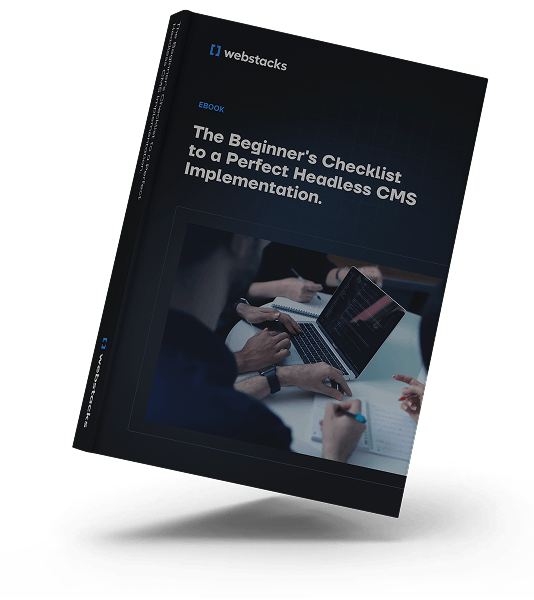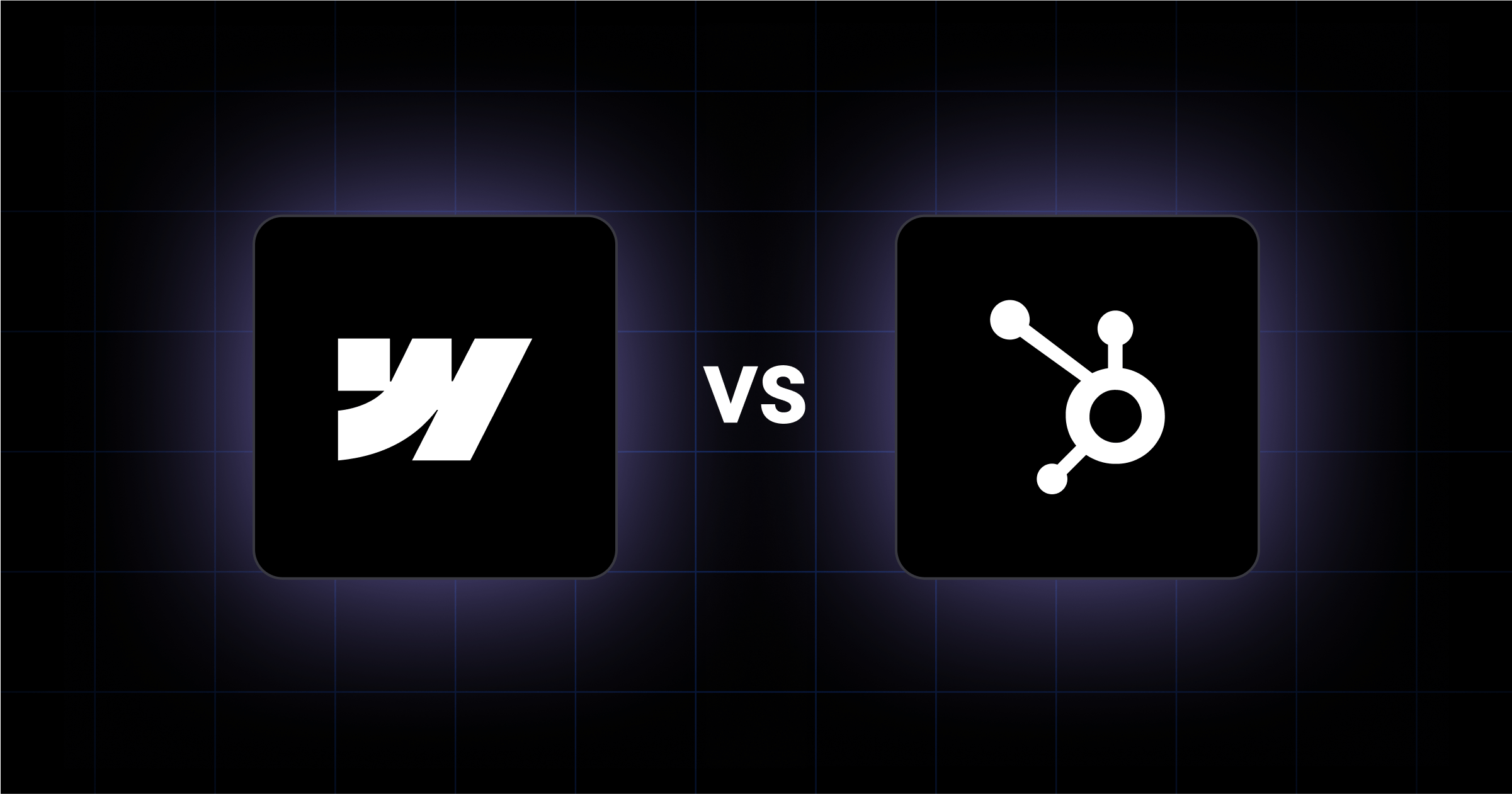If you're considering Webflow and HubSpot CMS, you should understand how each platform's features meet your specific needs.
Exploring their strengths and weaknesses in areas like ease of use, scalability, and integration capabilities will help you make an informed decision for your digital strategy.
And this is precisely what we'll do in our guide to Webflow vs HubSpot CMS.
In brief:
- Webflow offers exceptional design flexibility, enabling teams to create custom, visually stunning websites without writing code.
- HubSpot CMS integrates content management with marketing and CRM tools, providing strong marketing automation and scalability.
- Webflow suits businesses prioritizing unique design and autonomy in website management.
- HubSpot CMS is ideal for organizations focusing on marketing integration and significant growth plans.
Webflow vs HubSpot CMS: Key Differentiators
Webflow and HubSpot CMS each excel in different areas, making them suitable for various business needs.
(If you're exploring further options, comparing Webflow and Storyblok can provide additional insights into how Webflow stacks up against other platforms.)
Webflow: Great for Design and Visual Innovation
Webflow shines as a design-centric platform that prioritizes creative control and visual customization.
Its designer and editor tools allow teams to create highly customized, visually striking websites without writing code. Webflow's support for modular web design enables teams to reuse design components, which simplifies the development process.
The platform allows you to create dynamic content with advanced interactions and scroll-based animations, making it ideal for businesses where visual impact drives success.
Consider Webflow if you:
- Are part of a creative team requiring complete visual control
- Have a limited initial budget
- Prioritize unique, custom designs over marketing automation
- Want independence in website management without developer dependency

HubSpot: Great for Marketing Integration and Scalability
HubSpot CMS distinguishes itself through its comprehensive integration with marketing and CRM tools.
The platform creates a unified ecosystem where content management, customer relationships, and marketing automation work together. Its scalability makes it valuable for growing organizations that need their CMS to evolve alongside their business.
Consider HubSpot CMS if you:
- Your company focuses on marketing-driven growth
- Your organization requires integrated CRM capabilities
- You're planning significant scaling
- Your team needs comprehensive marketing analytics and automation

Feature Comparison
Both HubSpot CMS and WebFlow offer essential web design features, such as responsive design, interactive elements, and performance optimization. Let's see how they compare.
Core Platform Features
HubSpot CMS functions as an all-in-one platform, integrating content management with marketing and CRM capabilities. You get built-in A/B testing functionality, allowing you to optimize your pages for better conversion rates. The platform also includes advanced analytics that help you understand page performance and user behavior through customizable reports.
Webflow, in contrast, excels in design flexibility and visual development. You have complete control over your website's design through advanced CSS controls and a visual builder that provides direct access to the underlying code. This makes it particularly powerful for creating unique, custom designs without the constraints of templates.
Design and Development Capabilities
HubSpot CMS provides a drag-and-drop editor focused on simplicity and efficiency. The platform includes adaptive image optimization, adjusting images for optimal performance across different devices. It also offers multilingual capabilities built-in, making it easier to reach global audiences.
Webflow's design tools offer granular control, allowing you to create complex layouts and animations visually while maintaining access to the code. This approach is valuable when you need to build custom interactions or unique design elements that go beyond standard templates.
Marketing and Integration Features
HubSpot CMS's native integration with its CRM platform is a significant advantage for businesses focusing on marketing automation and lead generation. The platform connects your content management with customer data, so you can personalize content delivery based on user behavior and demographics.
Webflow takes a modular approach to integrations. While it may require third-party tools for advanced marketing features, this flexibility allows you to choose specific tools that match your exact needs rather than being locked into a single ecosystem.
Performance Optimization
Both platforms prioritize website performance but approach it differently.
HubSpot CMS uses a global content delivery network (CDN) to maintain fast loading times worldwide while handling security updates and maintenance.
Webflow provides built-in SEO tools and hosting optimizations, but its strength lies in the ability to fine-tune every aspect of your site's performance through direct code access. This gives you more control over optimization strategies but requires more technical expertise to implement effectively.
What Are Webflow's and HubSpot's Platform-Specific Strengths?
Understanding what Webflow and HubSpot CMS do best will help you make a more informed decision.
Webflow's Core Advantages
Webflow excels in design flexibility and visual development.
You have complete control over your website's look and feel through advanced visual tools that provide direct access to HTML, CSS, and JavaScript. This design-first approach makes it powerful for creating unique, visually striking websites without touching code.
The platform's autonomy-focused approach is evident in its designer and editor tools. You can independently manage both design and content aspects of your website through an intuitive drag-and-drop interface.
This self-sufficiency extends to creating dynamic content, including interactions and scroll-based parallax animations, making it possible to build engaging pages without technical expertise.
HubSpot CMS's Distinctive Features
HubSpot CMS stands out with its comprehensive technical capabilities and marketing integration.
At its core is HubDB, a powerful relational database that allows you to create dynamic pages and templates using stored data. You can manage up to 10,000 rows per table and 1,000 tables per account, which supports extensive scalability for complex content structures.
The platform's built-in analytics and marketing tools give you deep insights into website performance. You gain visibility into traffic patterns by topic cluster, country, and acquisition source, all integrated with HubSpot's CRM.
Advanced features like membership capabilities allow you to create gated content and manage subscriber access, while automated SEO tools handle technical aspects like 301 redirects and sitemap updates.
A key technical advantage is HubSpot's control over code and functionality. You can create custom complex features, implement modular programming, and use modern development tools and frameworks.
Making the Decision
If you're a smaller organization with limited resources, Webflow is likely the better choice.
Starting at just $12 per month for the Basic Plan, it offers excellent value for businesses prioritizing design flexibility and visual appeal.
Consider Webflow if you:
- Have a design-focused team
- Need complete control over your website's visual elements
- Work with third-party marketing tools
- Operate with a limited budget
For bigger organizations, HubSpot CMS is a more compelling option.
While starting at a reasonable $25 per month for the Starter Plan, it offers comprehensive marketing integration that can deliver significant ROI.
Consider HubSpot if you:
- Need integrated marketing automation
- Require robust CRM functionality
- Plan to scale significantly
- Value ease of use over design flexibility
Don't Forget About Technical Considerations
Your team's technical capabilities should influence your choice.
Webflow demands more technical expertise but offers greater design control, while HubSpot provides an intuitive interface that marketing teams can manage without extensive technical knowledge.
Choose Webflow if you have design resources and want complete creative control. Opt for HubSpot if you need a platform that marketing teams can manage independently while integrating with your customer relationship management tools.
How to Start the Implementation Process
Both HubSpot CMS and Webflow offer compelling features for modern website development, but they serve different needs. HubSpot CMS shines in marketing automation and customer journey optimization, while Webflow excels in design flexibility and creative freedom.
Once you've made your choice, it's time to kick off the implementation process and start the transition to your new CMS. This is where Webstacks can help.
We've assisted hundreds of enterprises with web design and development, creating scalable and high-performing websites.
Schedule a brief discovery call to learn more about our approach and solutions.





